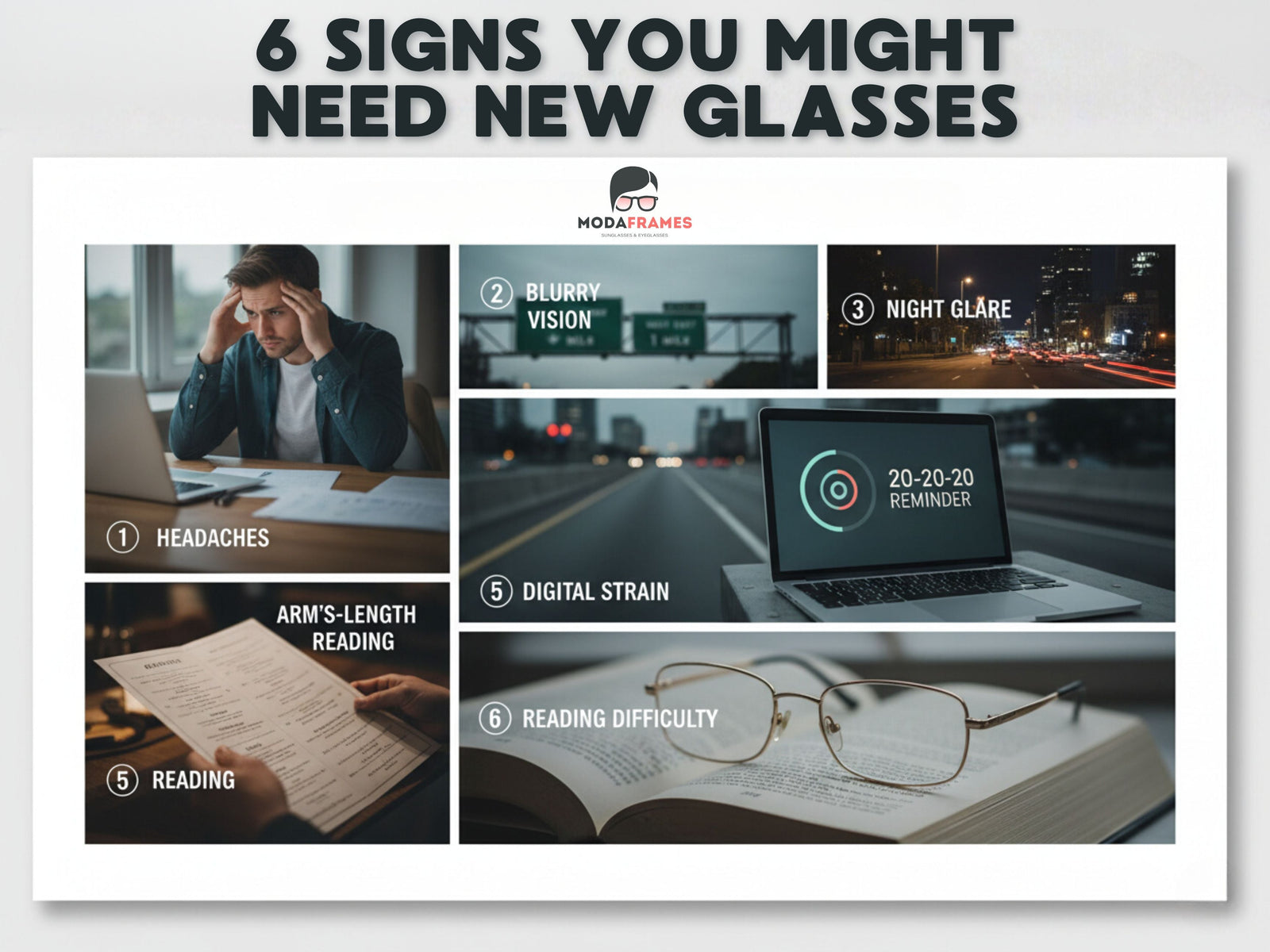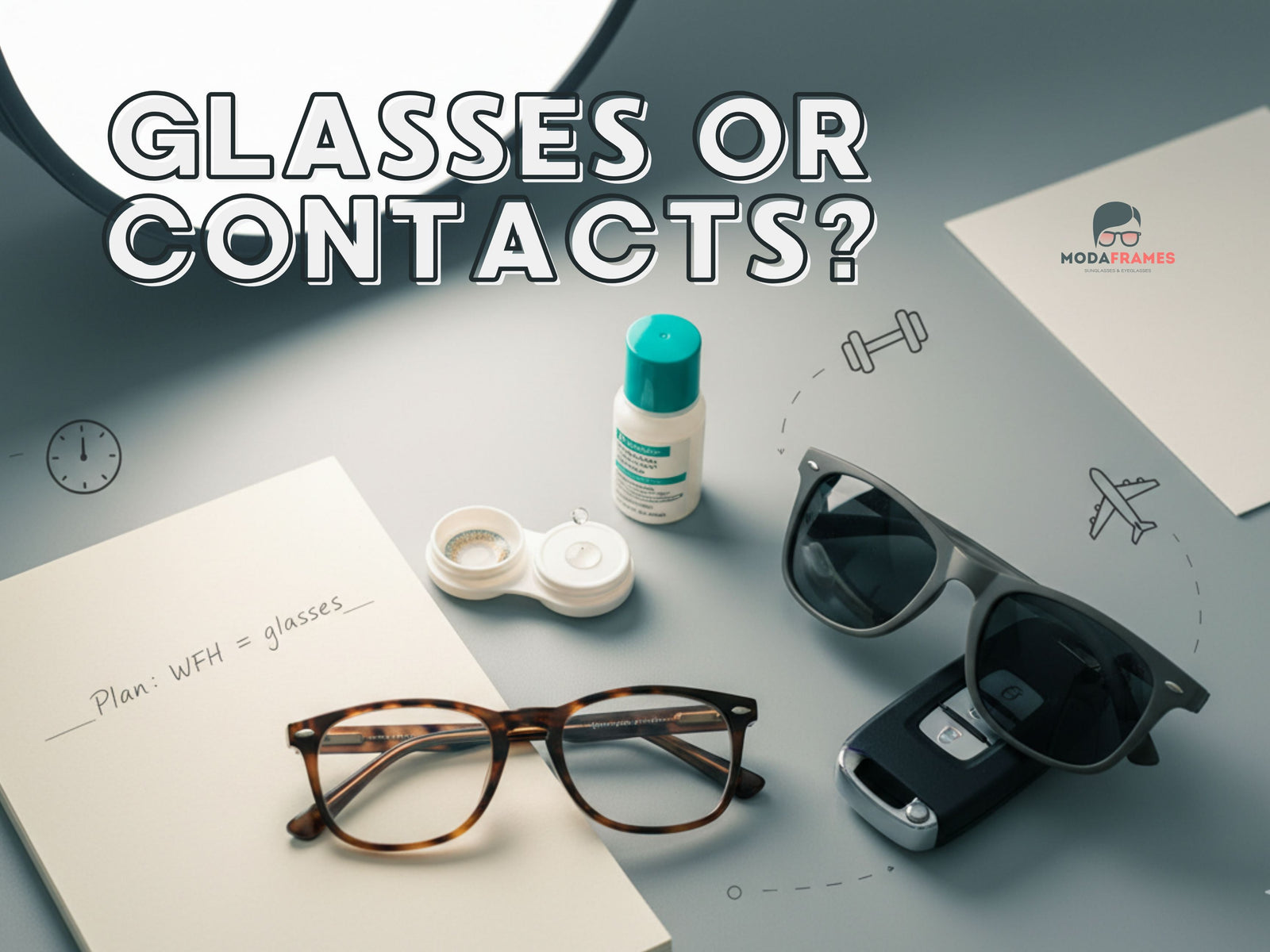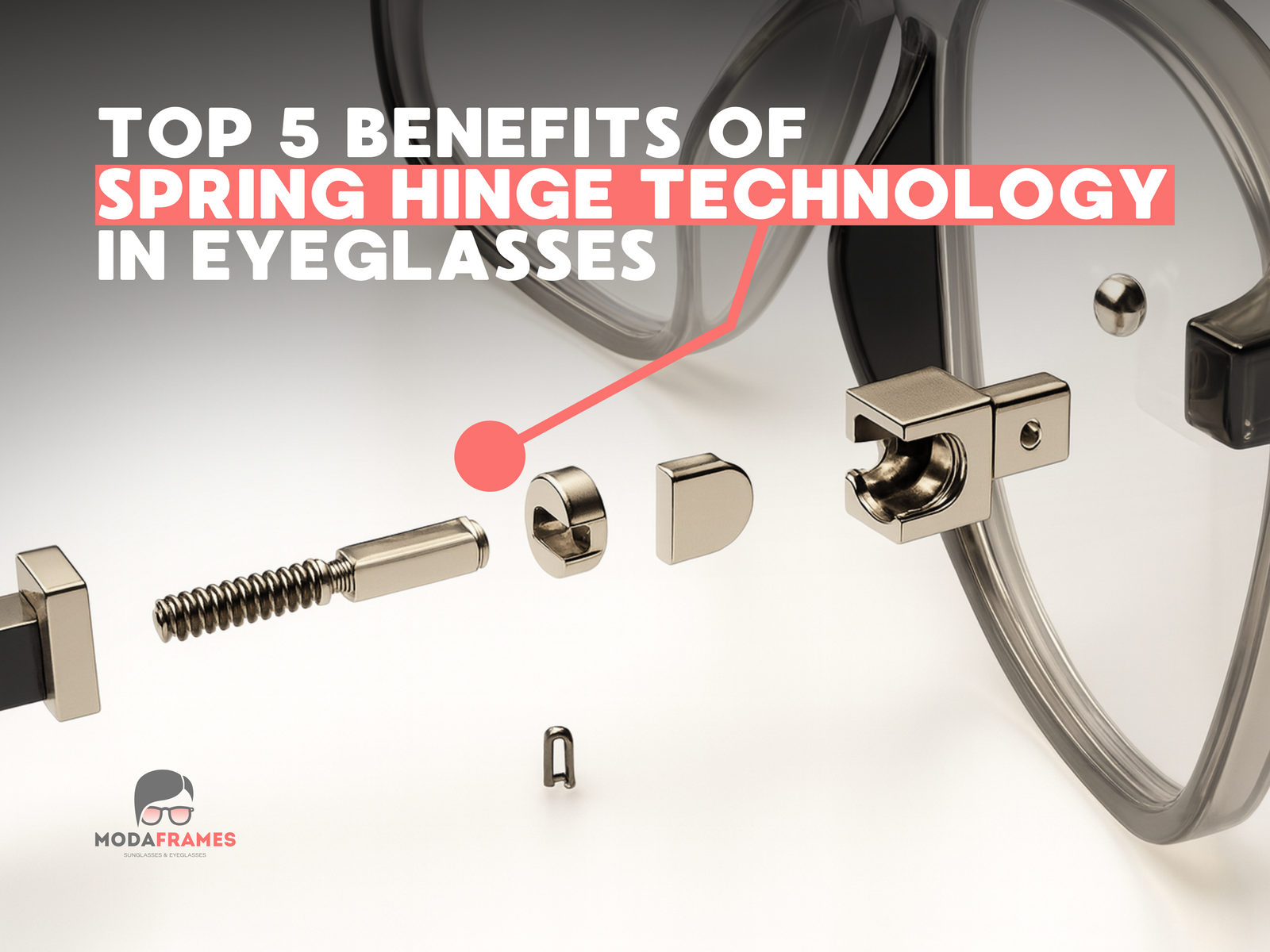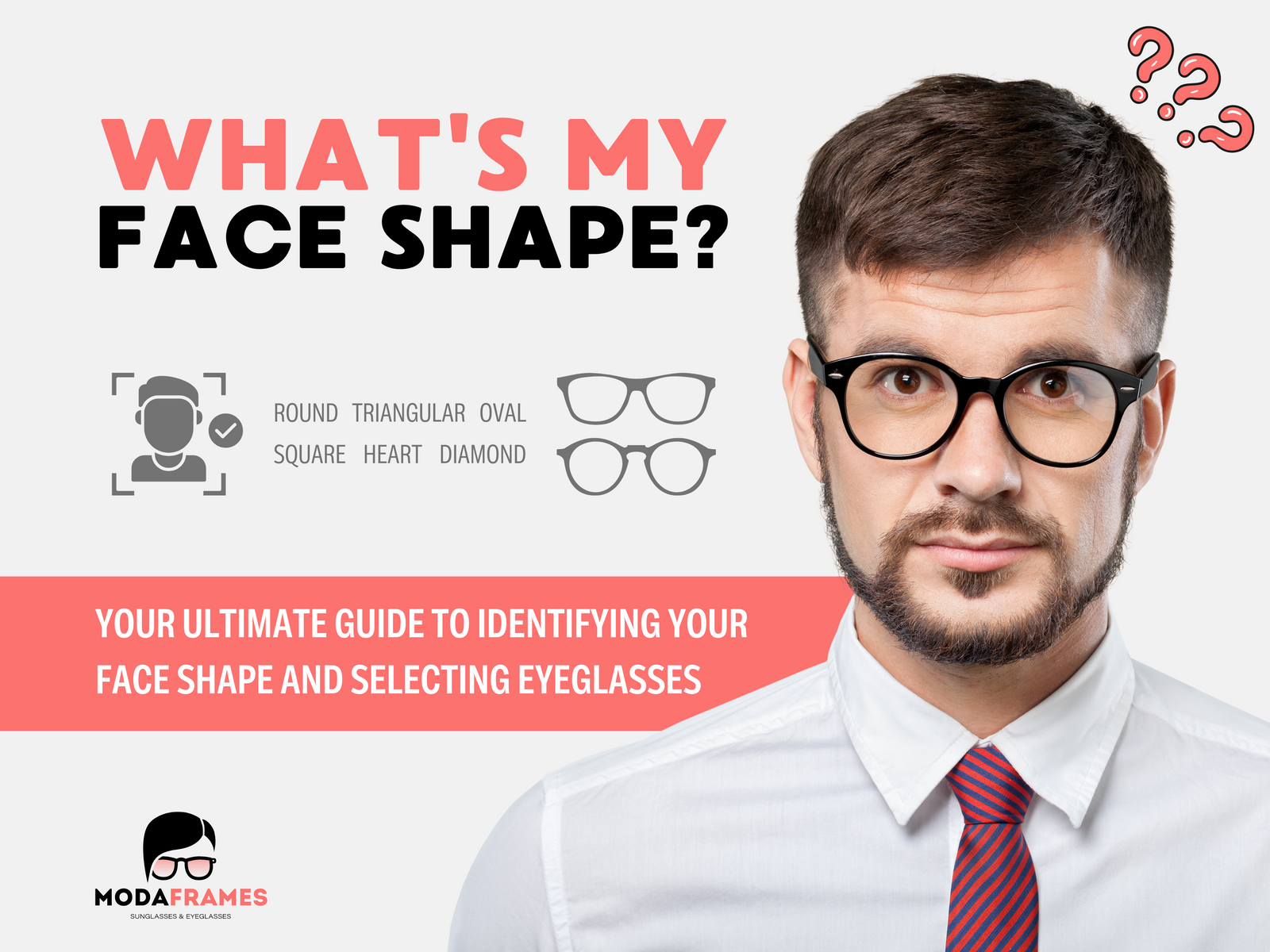Eyeglasses facts can change how you shop: understanding what eyeglasses are made of—from cellulose acetate frames and titanium eyeglasses to the ABBE value of lens materials—helps you balance style, clarity, safety, and sustainability.
Introduction: More Than Meets the Eye

Walking into an optical shop to choose new glasses is a familiar ritual. We slide different frames onto our faces, judging the angles, the colors, and how they complement our features. The conversation revolves around style: Should you go for the bold, black rectangle or the vintage-inspired tortoiseshell? Will this shade of blue wash you out? We focus so intently on the aesthetics that we rarely, if ever, ask what our glasses are actually made of.
But behind that simple, everyday object perched on your nose lies a hidden world of advanced material science, surprising history, and incredible innovation. The materials in your frames and lenses hold stories of stardust, renewable plants, and technologies so advanced they almost seem like science fiction. Prepare to have your perspective shifted; these are the mind-blowing facts about your eyeglasses that reveal they are far more than just a fashion accessory.
1. Your High-Quality "Plastic" Frames Are Actually Made From Plants
Let's clear up a common misconception. The "plastic" in your premium eyeglass frames isn't the cheap, petroleum-based stuff of disposable packaging. It's a sophisticated, plant-based polymer called cellulose acetate, derived from renewable resources like wood pulp and natural cotton fibers.

This sets it worlds apart from the cheaper, injection-molded frames made from petroleum. The depth of color in acetate is possible because of a meticulous manufacturing process. Unlike cheaper frames that are simply spray-painted, acetate frames are carved from large, layered blocks of the material—imagine a multi-colored slab of plastic—which means the patterns and hues are embedded throughout. This not only prevents color from ever flaking off but also creates a richness and complexity that sprayed coatings can't replicate.
Interestingly, from 1949 to 1963, even Lego blocks were made from cellulose acetate. This plant-based origin is why acetate remains the gold standard for premium plastic eyewear: it's hypoallergenic, making it ideal for sensitive skin, and it's simultaneously strong, lightweight, and capable of producing the richest, most beautiful colors.
Cellulose acetate frames deliver deep, embedded color and hypoallergenic comfort—key eyeglass materials insight for shoppers.
Want help choosing shapes that flatter your face? Explore our guide on what glasses suit your face shape.
2. Your Titanium Frames Are Forged from Stardust and Are Nearly Immortal
If you've ever opted for titanium frames, you're wearing a piece of the cosmos. Titanium is a true "space-age" material, a chemical element forged in the supernovas of dying stars and now found in mineral deposits across the Earth's crust. Its journey from star to spectacle frame is just the beginning of its extraordinary story.
“Titanium’s corrosion rate is so low that after 4,000 years in seawater, corrosion would only have penetrated the metal to the thickness of a thin sheet of paper.”

Titanium boasts the highest strength-to-density ratio of any metallic element, making it incredibly strong yet feather-light. It's also hypoallergenic and biocompatible, as it's a naturally occurring element in the human body. But its most astonishing quality is its resistance to corrosion.
This near-immortality comes at a cost. The complex "Kroll process" used to extract and purify titanium is about 10,000 times less efficient than that for making iron, which is why it remains a premium material.
Titanium eyeglasses are ideal when you want maximum durability with minimal weight. Verified titanium examples: Porsche Design P8206; Charmant 10926; Charmant 10927; Primary PT109. Browse all titanium-material frames here.
Looking for space-age performance? Titanium frames balance strength, hypoallergenic comfort, and corrosion resistance.
3. Thinner Lenses Can Sometimes Mean Worse Vision

Everyone wants thinner, lighter lenses, especially those with strong prescriptions. But here’s a counter-intuitive secret from the world of optics: the thinnest lens isn't always the best for your vision. In the quest for aesthetics, you can sometimes sacrifice optical quality.
Different lens materials disperse light differently, a property which can cause "chromatic aberration." In simple terms, this means some materials can create distracting colored fringes—like a faint rainbow edge—around sharp lines or bright objects. This effect is measured by a value known as the "ABBE number"—the higher the number, the better the optical clarity.

For example, standard CR-39 plastic lenses have a high ABBE value (58), offering excellent, crisp vision, but they are relatively thick. In contrast, polycarbonate lenses are much thinner and more impact-resistant but have a very low ABBE value (30), which means some wearers may notice more color fringing or peripheral distortion. This matters because the "best" lens is not just about being thin. It’s about finding the right balance between cosmetic appearance, impact safety, and pristine visual quality—a decision that should always be made in consultation with your eye care professional.
Lens Materials at a Glance
| Material | Relative Thinness | Optical Clarity (ABBE) | Impact Resistance | UV Blocking |
|---|---|---|---|---|
| CR-39 | Thicker | High (≈58) | Moderate | Needs coating |
| Polycarbonate | Very thin/light | Low (≈30) | High | Built-in |
| Trivex | Thin/light | Mid-range | High | Built-in |
Choosing lenses isn’t only about thinness—consider ABBE value, clarity, and impact needs.
4. Some Frames Remember Their Shape Better Than You Do
If you’re notoriously tough on your glasses, you may have encountered frames that seem to possess a superpower: shape memory. This isn't magic; it's "memory metal," a revolutionary material that can be bent, twisted, and contorted to an extreme degree and still return to its original shape.

The most famous brand of memory metal, Flexon, is a titanium alloy composed of approximately 50% titanium and 50% nickel. This unique combination gives the frames an incredible flexibility that traditional metal or plastic frames lack. However, achieving this superpower involves a fascinating engineering trade-off. To gain that incredible flexibility, a potential allergen—nickel—is introduced, which can cause skin irritation in some wearers unless properly coated.
This is the crucial compromise: while the pure titanium prized for being completely hypoallergenic is discussed in Section 2, the nickel required for memory metal's 'superpower' reintroduces the risk of skin irritation for some—a hidden compromise in the pursuit of flexibility. It’s a perfect example of how material science is a game of balancing benefits.
Memory metal glasses offer extreme flexibility—great for active lifestyles or rough handling.
5. Your Lenses Might Not Be Blocking Harmful UV Rays
Here's a critical assumption most of us make: all glasses automatically protect our eyes from UV rays. The shocking truth is, that protection is entirely dependent on the material your lenses are made from, and the most common material offers no built-in defense at all.

Some materials, like polycarbonate and Trivex, are natural UV blockers; their chemical composition inherently filters out harmful UV radiation without needing extra coatings. However, the most common optical lens material in the world, standard CR-39 plastic, does not automatically provide this protection. For these lenses to be safe for outdoor wear, they must be treated with a special UV-blocking coating.
A scientific study confirmed that these UV tints are highly effective, absorbing all of the UV-B and at least 99% of UV-A rays. The study also found the coatings to be remarkably durable, showing no significant decrease in protection even after a full year of daily washing and drying. This is a non-negotiable health feature. Always confirm with your optician that your lenses—regardless of material—provide 100% UV protection.
For outdoor glare and comfort, consider polarized sunglasses that combine UV blocking with glare reduction.
UV protection lenses are essential—verify 100% UVA/UVB coverage on your next pair.
6. Your Next Pair of Glasses Could Be Made From Castor Oil

The future of eyewear is not just about style and performance; it's also about sustainability. Driven by advances in material science, a new generation of eco-friendly materials is emerging that challenges the dominance of traditional plastics and metals.

One of the most exciting trends is 3D-printed eyewear. Many of these futuristic frames are made from a polyamide plastic that is primarily derived from castor oil—a renewable, bioplastic source. This move away from petroleum is gaining momentum. Another innovative material, Grilamid BTR, is an eco-friendly polyamide with a bio-content of around 54% from castor oil. Compared to crude-oil-based polyamides, its manufacturing process can reduce greenhouse gas emissions by up to 75%.
This signifies a major shift in the industry. The glasses of tomorrow won't just be designed to help you see better and look great; they'll be engineered to be kinder to the planet, proving that high-tech innovation and environmental responsibility can go hand in hand.
Eco-friendly eyewear is on the rise—bio-based polyamides from castor oil support sustainable choices.
Conclusion: A New Way of Seeing Your Eyewear
The glasses you wear every day are much more than a simple tool for vision correction. They are a piece of high-tech equipment, a fusion of chemistry, physics, and design, with a material story that spans from cotton fields to the hearts of distant stars. Each component is a testament to decades of scientific discovery aimed at making your world clearer, safer, and more comfortable.
By understanding the science behind the materials, you empower yourself to make better choices—not just for your style, but for your visual health and lifestyle needs. The next time you choose a new pair of glasses, will you look beyond the style and ask about the story behind the material?
Ready to put these eyeglasses facts into action?
Explore lightweight titanium eyeglasses, glare-cutting polarized sunglasses, and fresh new arrivals—and if you love value, check our eyeglasses under $30. Browse by featured brands or ask us anything in the FAQ.

Editor’s picks: Titanium favorites — Porsche Design P8206; Charmant 10926; Charmant 10927; Primary PT109. See the full titanium selection here.
FAQ
What are the most important eyeglasses facts to know before buying?
Know your frame materials (cellulose acetate, titanium, memory metal), lens properties (ABBE value, impact resistance), and whether lenses include full UV protection.
What are eyeglasses made of today?
Common frame materials include cellulose acetate (plant-based), metals like stainless steel and titanium, and flexible memory metal alloys. Lenses range from CR-39 to polycarbonate and Trivex.
Are titanium eyeglasses hypoallergenic?
Yes. Pure titanium is biocompatible and hypoallergenic, while some memory metal alloys include nickel and may need proper coatings for sensitive skin.
What is the ABBE value and why does it matter?
ABBE value indicates optical clarity and chromatic dispersion. Higher numbers generally mean crisper vision with less color fringing.
Do CR-39 lenses block UV light?
Not by default. CR-39 requires an added UV coating to ensure 100% UVA/UVB protection.
Are polycarbonate lenses worse than CR-39 for clarity?
Polycarbonate is thinner and more impact-resistant but has a lower ABBE value, so some wearers may notice more chromatic aberration.
What are Trivex lenses?
Trivex combines light weight and high impact resistance with mid-range optical clarity and built-in UV blocking—often a balanced choice.
What are memory metal glasses?
They use shape-memory alloys (e.g., Flexon) that bend and spring back, ideal for active or rough use.
Are eco-friendly eyeglasses real?
Yes. Bio-based materials like castor-oil polyamides and 3D-printed frames reduce reliance on petroleum and can lower emissions.
Where can I shop polarized sunglasses and new eyeglass styles?
See Polarized Sunglasses, New Arrivals, and Featured Brands on ModaFrames.



